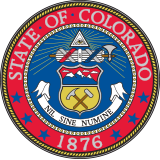Sales and Use Taxes
Background
State sales and use taxes were introduced in 1935 and 1937, respectively. The sales tax is a consumption tax levied on sales of tangible personal property and some services.1 The tax is paid by consumers and collected by vendors on the state’s behalf. Generally, vendors remit sales tax returns to the Colorado Department of Revenue on a monthly basis, though some vendors with very few sales file returns each quarter. The state allows vendors that collect the sales tax to retain a portion of the taxes collected as a vendor fee. [Effective July 1, 2020, the vendor fee is equal to 4 percent of the sales tax, but is capped at $1,000.00 per filing period per retailer. The fee offsets vendors’ costs for collecting and remitting the sales tax to the state.]
Colorado has a complementary use tax that applies when sales tax is owed but was not collected, if, for instance, the seller had not been authorized as a vendor. When personal property on which sales tax was not collected is consumed, the consumer is responsible for remitting the use tax to the state. Instructions and forms for filing use tax are available on the Department of Revenue website.
Sales and use taxes are subject to the TABOR limit on state revenue and spending. In addition to the state sales tax, the state collects and administers sales taxes levied by counties, statutory cities, and special districts. Home rule cities are responsible for administering their own sales taxes. Vendors are required to file a sales tax return for each business location they operate; doing so allows the Department of Revenue to distribute local sales tax revenue to the appropriate taxing district. Local sales tax revenue is not subject to the state TABOR limit, but is subject to local government TABOR limitations.
Use taxes are due on April 15, following the year in which sales occurred. Beginning in tax year 2015, use taxes may be reported on the state individual income tax return.
Tax Rate

Tax Exemptions
There are 80 sales and use tax exemptions, many of which allow the state to avoid “tax pyramiding,” whereby individual products are taxed multiple times at multiple stages of the production cycle.2 Other exemptions include most food for domestic home consumption and both gasoline and diesel fuel, which are instead subject to fuel excise taxes. The Department of Revenue publishes information on sales and use tax exemptions in its biennial Tax Profile and Expenditure Report. The 10 largest sales and use tax exemptions are listed below.
-
wholesale sales;3
-
sales of tangible personal property that becomes a component part of a manufactured product or service;4
-
sales of food for domestic home consumption;5
-
sales of gasoline and special fuel, including diesel, natural gas, propane, and kerosene;6
-
the sale, storage and use of neat cattle, sheep, lambs, poultry, swine, and goats, held and used for breeding purposes only;7
-
sales to the United States government and the state of Colorado, its departments, institutions, and political subdivisions;8
-
sales of fuel for residential heat, light, and power;9
-
sales of construction and building materials used by contractors on public works projects, tax-exempt organizations, and public schools;10
-
sales of feed for livestock, seeds, and orchard trees;11 and
-
sales of machinery or machine tools used in the manufacturing process.12
Distribution
Via the Old Age Pension Fund, sales and use tax revenue is allocated to the General Fund for spending on general operations at the discretion of the General Assembly.13 In FY 2018-19, sales tax revenue totaled $3.1 billion, the second highest amount of any state tax. Use tax revenue totaled $346 million for the same fiscal year.
Federal Taxes
Sales and use taxes are not collected at the federal level.
State Comparisons
Among the 45 states that assess state sales and use taxes, Colorado’s tax rate is the lowest in the country. When comparing both state and local government sales tax rates across states, Colorado is close to the national average. California's sales tax rate is the highest in the country at 7.25 percent, while Indiana, Mississippi, Rhode Island, and Tennessee each levy 7 percent state sales taxes. Five states, including Alaska, Delaware, Montana, New Hampshire, and Oregon, do not assess sales taxes.
